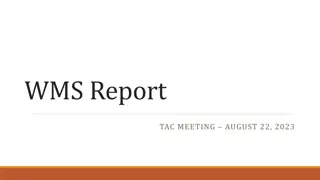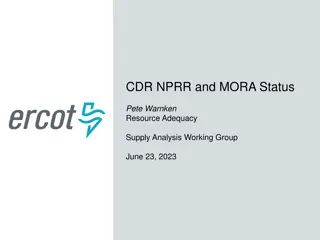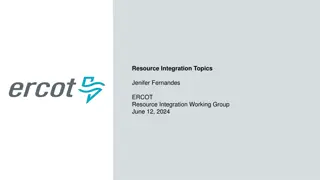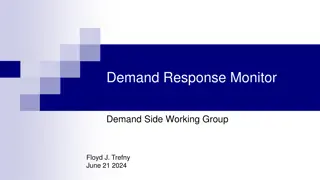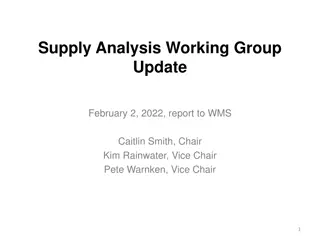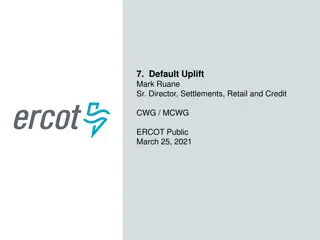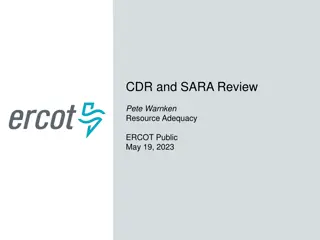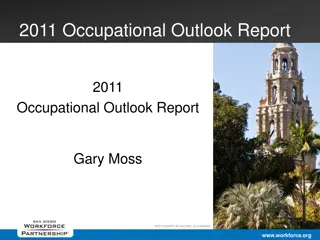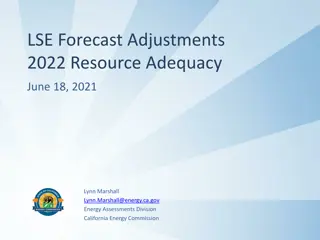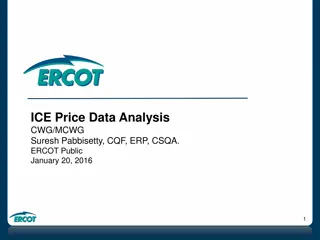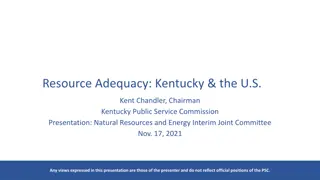ERCOT Monthly Resource Adequacy Reports and Outlook Analysis
Review of December 2023 capacity, demand, and reserves along with the February monthly outlook for resource adequacy reports by Pete Warnken Resource Adequacy Supply Analysis Working Group. The analysis includes changes in resources, risk assessments for emergency conditions, simulations, and the impact of weather scenarios on load forecasts.
Download Presentation

Please find below an Image/Link to download the presentation.
The content on the website is provided AS IS for your information and personal use only. It may not be sold, licensed, or shared on other websites without obtaining consent from the author. Download presentation by click this link. If you encounter any issues during the download, it is possible that the publisher has removed the file from their server.
E N D
Presentation Transcript
Review of December 2023 Capacity, Demand and Reserves and February Monthly Outlook for Resource Adequacy Reports Pete Warnken Resource Adequacy Supply Analysis Working Group December 20, 2023
Resource Changes Relative to the May 2023 CDR 2 ERCOT Public
Monthly Outlook for Resource Adequacy (MORA) Riskiest hour for experiencing emergency conditions remains at 8 a.m., with February expected to have lower risk than January 3 ERCOT Public
Monthly Outlook for Resource Adequacy (MORA) A WS Elliott scenario fixes peak load to a value reflecting weather comparable to that experienced during the storm; risk for emergency conditions increases 4 ERCOT Public
Monthly Outlook for Resource Adequacy (MORA) Base Simulation (Hour-ending 1500) The fixing of loads to WS Elliott levels results in many more CAFOR outcomes that are near or below the 2,500 MW risk threshold; however, it also reduces the severity and number of extremely low CAFOR outcomes; if load is not fixed, the model can select load values higher than the Elliott amount. Number of CAFOR outcomes less than 2,500 MW = 3 50th Percentile CAFOR = 46,806 MW Min CAFOR value = -3,209 MW Elliott Scenario Simulation (Hour-ending 1500) Number of CAFOR outcomes less than 2,500 MW = 0 50th Percentile CAFOR = 27,781 MW Min CAFOR value = 7,979 MW 5 ERCOT Public
Monthly Outlook for Resource Adequacy (MORA) Why do certain hours show slightly less EEA risk under the WS Elliott scenario? The availability of ~3,500 MW of pre-EEA resources eliminates the already small number of low-CAFOR outcomes that would otherwise arise during the lowest-risk hours (mid-afternoon load dip along with maximum solar generation). 6 ERCOT Public




